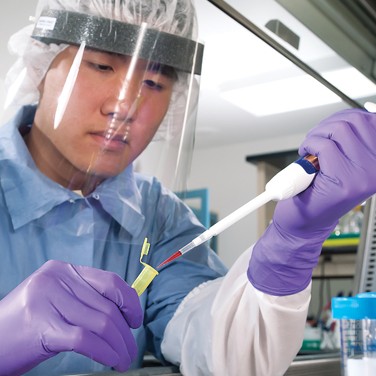A Second Life: Lab and Cleanroom Gloves
Choosing gloves, whether changing or upgrading them for your cleanroom, lab or controlled environment, is a process that takes time and careful consideration. The right decision can have a positive impact on both employee satisfaction and product and process yields, while the wrong decision can be costly when the gloves don’t perform as expected or don’t fit the task or hazard.
To minimize contamination risks and enhance individual protection, choose the right gloves by:
- Analyzing the process and any hazards or risks to products or personnel
- Looking for gloves designed specifically for your work environment
- Making sure that the gloves are comfortable and offer tactile sensitivity
Protection Against Harm
Did you know?
- An estimated 13 million U.S. workers are exposed to chemicals that are absorbed through the skin. 1
- Workplace exposure to hazardous drugs can cause acute and chronic health effects: skin rashes, adverse reproductive outcomes, leukemia and other cancers. 2
- Most (9 out of 10) people who work with hazardous drugs are not familiar with glove testing standards. 3
The right gloves protect hands and skin from lab or cleanroom hazards to help ensure operator and environmental safety. When working with hormones, chemotherapy or other hazardous drugs, make sure that the gloves you are using are certified for these substances, since there are no acceptable levels of exposure to them. Examples of certifications include:
- Kimberly-Clark Purple Nitrile-Xtra Exam Gloves (Tested according to ASTM D6978-05; protects against up to 33 hazardous drugs; 29 chemotherapy drugs and four hormones)
- Kimberly-Clark Sterling Nitrile Exam Gloves (Tested according to ASTM 6978-05; for use with 12 different chemotherapy drugs and four hormones)
Diverting Gloves from Your Waste Stream
Gloves are ubiquitous in labs and cleanrooms, and workers may use multiple pairs in the course of a workday. And although they are necessary, the amount of waste produced is significant. In fact, used nitrile gloves can make up nearly 25 percent of the solid waste stream of labs or research facilities.
But it doesn’t have to be that way. The RightCycle™ Program offers an alternative way for labs and cleanrooms to recycle non-hazardous gloves and single-use apparel to divert them from solid waste streams. The first large-scale recycling effort of its kind, this program has diverted more than 450 tons of waste from landfills since its launch in 2011.
Many labs and cleanrooms are already a source for primary recycled commodities (glass, plastic and aluminum). If gloves, garments and other accessories are not exposed to biohazardous materials, they can be safely recycled into items like totes, shelving, or lawn and garden furniture. Diversion of these secondary materials is the next step toward achieving the goal of zero waste.
That’s just one reason why so many labs are participating in The RightCycle Program.
Here’s another — it’s the right thing to do.
1 Centers for Disease Control and Prevention Skin Exposures and Effects, The National Institute for Safety and Health (NIOSH)
2 NIOSH, http://www.cdc.gov/niosh/topics/hazdrug/
3 Kimberly-Clark Professional survey, Nov. 2016




